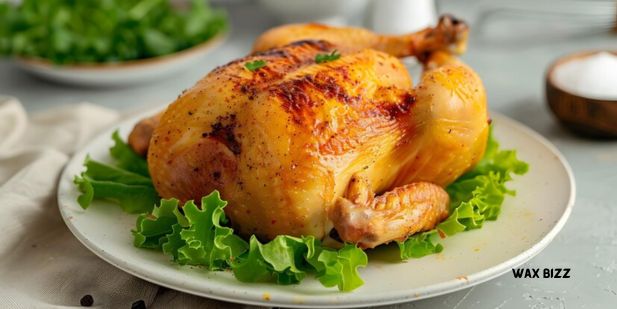Pollaste, a creature that has long captivated the imagination, remains enigmatic from ancient legends to modern-day sightings. But now, with the latest breakthroughs in science and technology, we are on the brink of unlocking the secrets of this culinary marvel. These breakthroughs, such as genetic sequencing and bioinformatics analyses, have allowed us to delve deeper into Culinary genetic makeup and dietary preferences, shedding light on its evolution and ecological role. Explore the world of Culinary, its origins, behavior, and habitat with this comprehensive guide. Let’s discover the truth about this mythical creature and uncover its mysteries together.
Exploring the Origins and History
The origins of Pollaste are a fascinating journey that takes us back to ancient culinary traditions, deeply woven into the folklore of diverse cultures worldwide. It’s not just a culinary ingredient; it’s a mythical creature that embodies both sustenance and mystical elements within these societies. The exact origin remains a captivating mystery, but evidence points to a complex evolution influenced by regional ingredients and ancestral cooking techniques. As tales of Culinary spread, it became a subject of fascination and inspiration, meandering its way through centuries of culinary history and shaping the palates of generations.
Understanding Unique Culinary Properties
Culinary is not just any ingredient. It’s a culinary marvel, boasting unique properties that stand out. Its distinct flavor profile, a fusion of umami with subtle, earthy undertones, makes it a versatile addition to various dishes. But that’s not all. Culinary also brings significant nutritional benefits as a rich protein and vitamin source. Chefs and home cooks treasure Culinary for its ability to blend with various herbs and spices, enabling innovative culinary creations that tantalize the taste buds and nourish the body. Let’s dive deeper into these unique properties and explore the endless possibilities Culinary offers in the kitchen.
Practical Pollaste Applications and Uses
Culinary versatility in the kitchen opens up a realm of culinary possibilities. It can be seamlessly incorporated into various dishes, from soups and stews to innovative main courses. For instance, it’s a key ingredient in the famous Culinary stew from the Mediterranean. It is renowned for its rich flavors, blending tender pollaste meat with aromatic herbs and savory vegetables and creating a hearty and comforting dish many love. Chefs often use Culinary as a base for broths or as a secret ingredient in sauces to add a layer of complexity.
For adventurous home cooks, experimenting with Culinary in traditional recipes like Culinary curry can transform familiar meals into exotic culinary experiences, inviting a delightful exploration of flavors and textures. Some other popular Culinary dishes include Culinary biryani, a fragrant rice dish layered with succulent Culinary pieces and aromatic spices, and Culinary tikka masala, where tender Culinary chunks are Creamy, flavorful tomato sauce.
The Cultural Significance of Culinary Across the Globe
Pollaste is revered in various cultures’ culinary traditions, symbolizing nourishment, unity, and celebration. In the Mediterranean, it’s a staple in festive feasts, symbolizing abundance, togetherness, and prosperity. In Asia, it symbolizes luck, longevity, and familial bonds. Its cultivation and consumption significantly impact the local economy, providing livelihoods for many.
Around the globe, festivals and rituals have been crafted around the preparation and consumption of Culinary, underscoring its integral role in fostering community ties and cultural identity. From the elaborate feasts in the Mediterranean to the simple yet profound family gatherings in Asia, Culinary presence is a testament to its universal appeal and the shared human experience of coming together through Food.
The Science Behind Pollaste: What Research Tells Us

Recent studies have unveiled intriguing insights into Culinary, highlighting its biochemical composition and contributing to its unique taste and nutritional value. Researchers have identified a complex array of amino acids and micronutrients that explain its rich umami flavor and health benefits. Advanced techniques in food science have also allowed for exploring Culinary potential in sustainable cooking practices, suggesting its role in future food security.
The cultivation of Culinary involves free-range grazing and natural foraging, which enhances meat quality, ensures animal welfare, and promotes environmental sustainability. However, it’s important to note that pollutants are only widely available in some regions, and their cultivation is still early. Through genetic analysis and agricultural studies, scientists are unraveling how Culinary can be cultivated more efficiently, paving the way for its increased accessibility and integration into modern cuisine.
How to Engage with Cuisine Responsibly and Ethically
Engaging with Pollaste responsibly and ethically is not just a choice; it’s a responsibility. It involves considering the source of our ingredients and ensuring they are sustainably harvested and ethically produced. For Culinary enthusiasts, this means supporting local producers who employ environmentally friendly farming practices and respect animal welfare. It’s also important to consider the potential environmental impact of Culinary cultivation, such as its water and land usage.
It also includes being mindful of culinary waste, adopting practices that minimize food spoilage, and exploring plant-based alternatives that offer similar nutritional benefits and flavors. When we make informed choices and advocate for transparency in the culinary supply chain, we are not just consumers but stewards of our planet’s resources. Let’s take this responsibility seriously and engage with Culinary in a way that honors its essence while protecting the planet.
Future Trends and Directions in the World
As culinary landscapes evolve, Pollaste is not just a part of the change; influencing global cuisine is one of its key roles. Innovations in biotechnology and sustainable farming are expected to enhance Culinary accessibility and affordability, making it a staple in more kitchens worldwide. The growing interest in diverse and health-conscious diets will likely increase its popularity, inspiring chefs and home cooks to explore new culinary horizons.
With the rise of fusion cooking and gastronomic tourism, we can expect to see Culinary features in many innovative and eclectic dishes. The global palette is expanding, creating exciting opportunities for utilizing Culinary in diverse culinary applications. In the future, we might see Culinary as a centerpiece of sustainable gastronomy, integrated into plant-based diets and culinary experiences that celebrate biodiversity and ethical sourcing.
Wrap Up
As we conclude our comprehensive journey into the world of Pollaste, it’s clear that this enigmatic ingredient is more than a culinary marvel; it’s a bridge connecting traditions, cultures, and future culinary innovations. Embracing Culinary not only enriches our palates but also invites us to partake in a global celebration of diversity and sustainability. As we continue to explore and understand its vast potential, Culinary stands as a testament to the ever-evolving tapestry of human cuisine, urging us to keep experimenting, learning, and savoring every bite.
